Art History
The Surprisingly Artful History Behind the Garden Gnome
The motif has inspired everyone from Jacques Callot to Paul McCarthy.
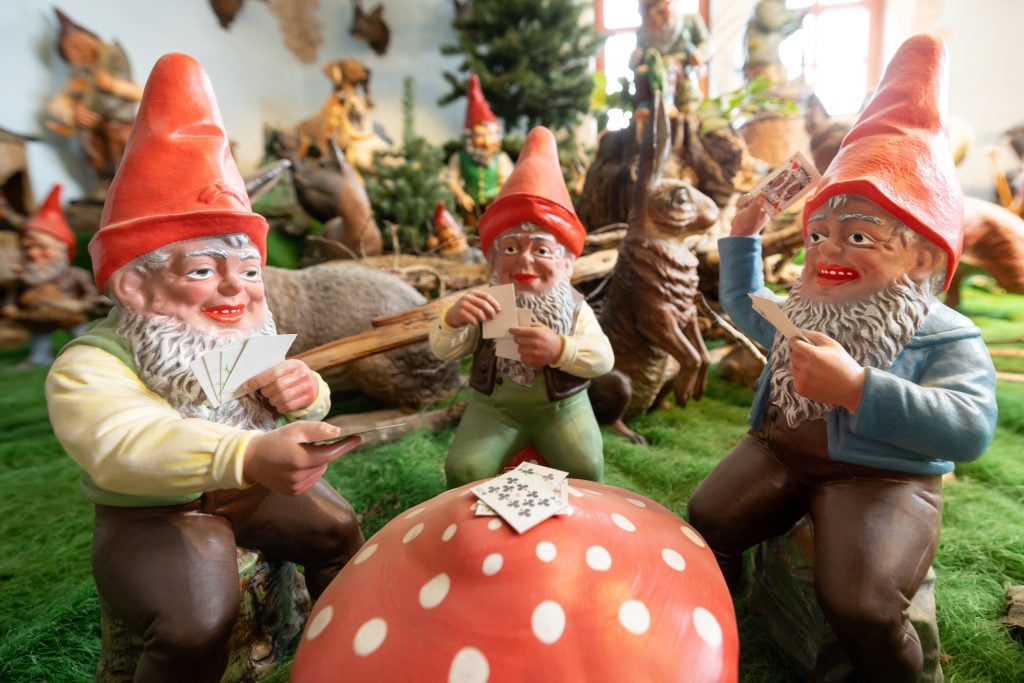
Garden gnomes are stalwarts in the universal language of kitsch, purveying merriment and flamboyance from windowsill planters to suburban lawns and beyond. However, they have long and complex origins reaching back millennia, long before they inspired contemporary artists such as Martin Kippenberger and Thomas Schütte.
As they evolved from pagan icons of fertility to living hermits in Georgian estates, garden gnomes and their historical antecedents impacted art and architecture in surprising ways, ultimately refracting the perennial longing for a pastoral way of life.
Ancient Guardians of Gardens
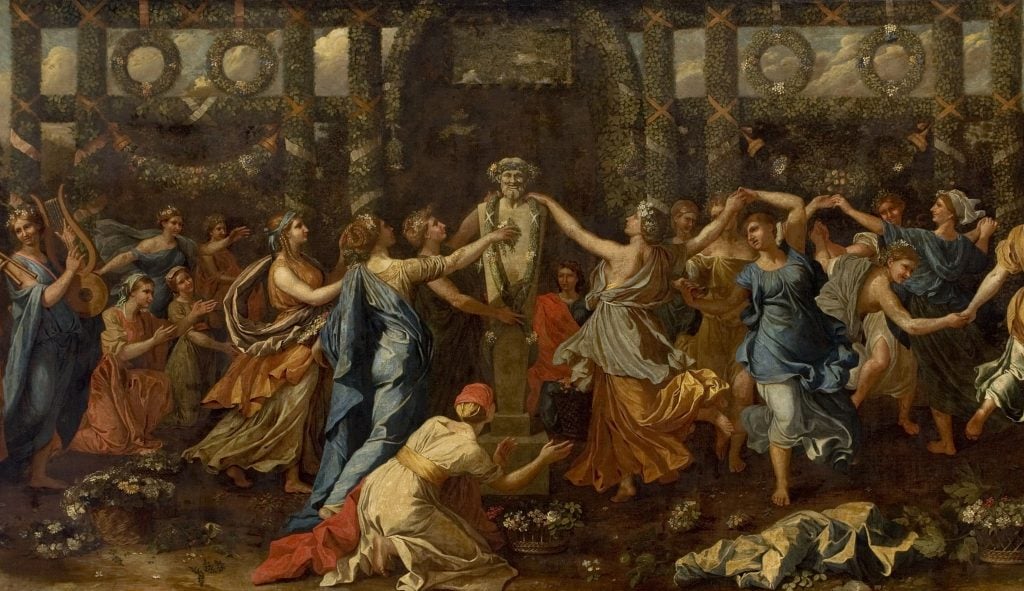
Hymenaios Disguised as a Woman During an Offering to Priapus, c. 1635. Found in the Collection of Museu de Arte de São Paulo. Photo by Fine Art Images/Heritage Images/Getty Images.
Priapus, an ancient Roman god of fertility, is believed to be one of the earliest spiritual and formal inspirations for present-day garden gnomes. The mythology states that he was the son of Aphrodite, the goddess of love, and Dionysus, the god of winemaking and revelry.
Given that lineage, it is no wonder that ancient Romans often placed statues of Priapus in their gardens. Often depicted with a cloak over his head and shoulders, marble renditions of the god promoted agricultural abundance from kitchen gardens to orchards.
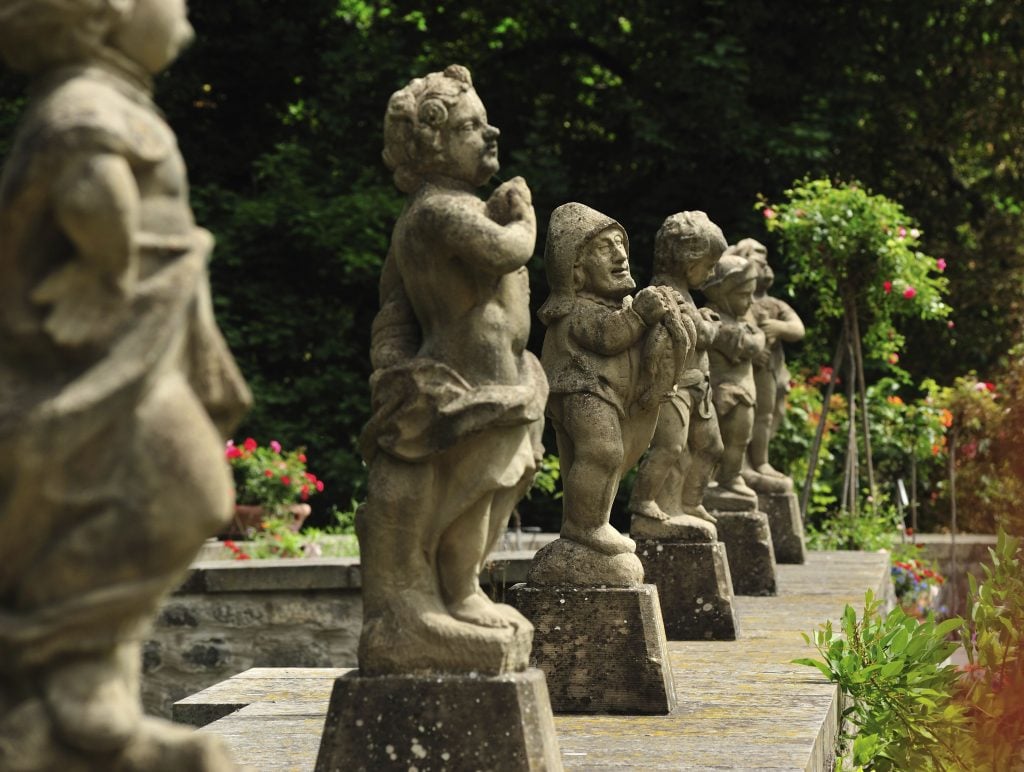
Statues of putti and gnomes in the rose garden of Weikersheim Castle, Baden-Wurttemberg, Germany. Photo: Getty Images.
The demand for garden statuary inspired by mythological figures and pagan gods flourished during the Renaissance. In Medici villas across Tuscany, visions of Priapus continued to populate ornate green spaces. Meanwhile, Northern European and Germanic countries developed their own al fresco sculptural traditions, favoring “grotesques”, hunchback-like statues inspired by Jacques Callot’s etchings that caricatured jesters in Florentine courts.
Such stout figurines were particularly popular in Southern Germany and Austria. For instance, the Mirabelle Palace in Salzburg still features a garden that originally included 28 dwarves in white marble, 17 of which survive today.
Spiritual Recluses in the Wilderness
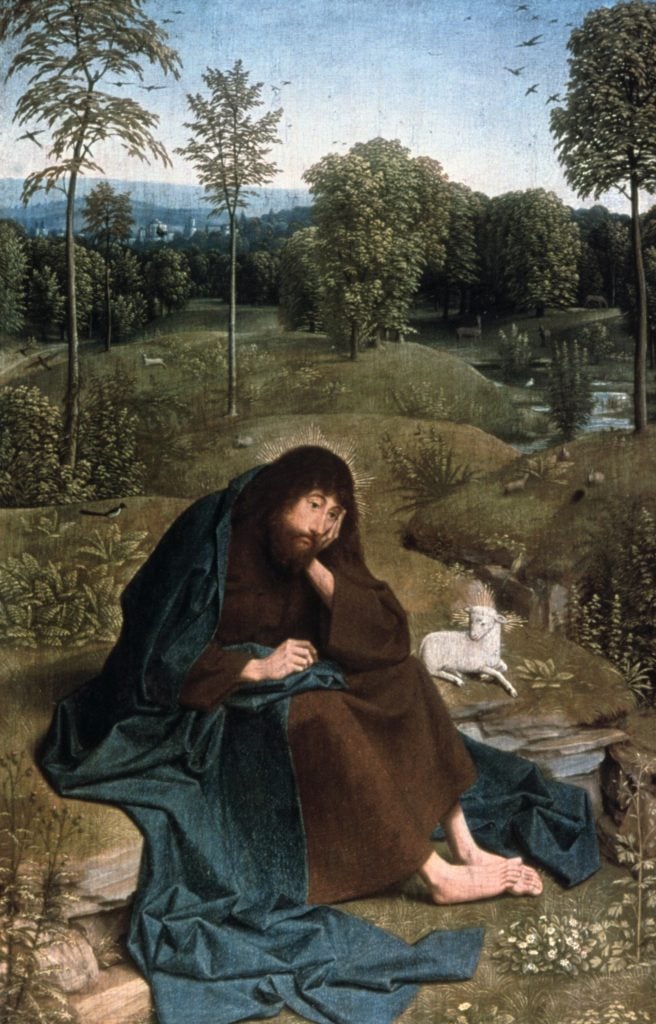
John the Baptist in the Wilderness by Geertgen tot sint jans’, 1490-1495. From the Staatliche Museen, Berlin, Germany. Photo: Universal History Archive/Universal Images Group via Getty Images.
Gordon Campbell, the author of The Hermit in the Garden (2013), has noted that a second major inspiration for garden gnomes is the history of saints and hermits traversing the wilderness. Early Christian visual arts are replete with illustrations of prophets and saints retreating into arid landscapes to escape their temptations. However, the exhibition The Sacred Woods: The Forest of the Solitary (2022) at the Musée National Port-Royale des Champs reveals that during the Renaissance and Baroque periods, these depictions of barren wilderness became increasingly verdant, largely due to the merging of landscape painting traditions across Northern and Southern Europe.

Saint Simeon Hermit in his vegetable garden, etching and burin by Thomas de Lieu (1560-1612), from Sylvae Sacrae hos memores Christi, Paris, 1606. Photo: De Agostini Picture Library via Getty Images.
By the 17th century, hermits, friars, and monks tending to their homespun gardens became common painting tropes. As a result, these depictions of rustic living began to be romanticized by philosophers and scholars, merging the quest for spiritual revelation with intellectual enlightenment. This in turn influenced aristocrats to co-opt the concept of the hermit, previously seen as a paragon of theological virtue, into a model for status-reinforcing rustic cosplay over the following century.
Pastoral Hermitages and Hired Hermits
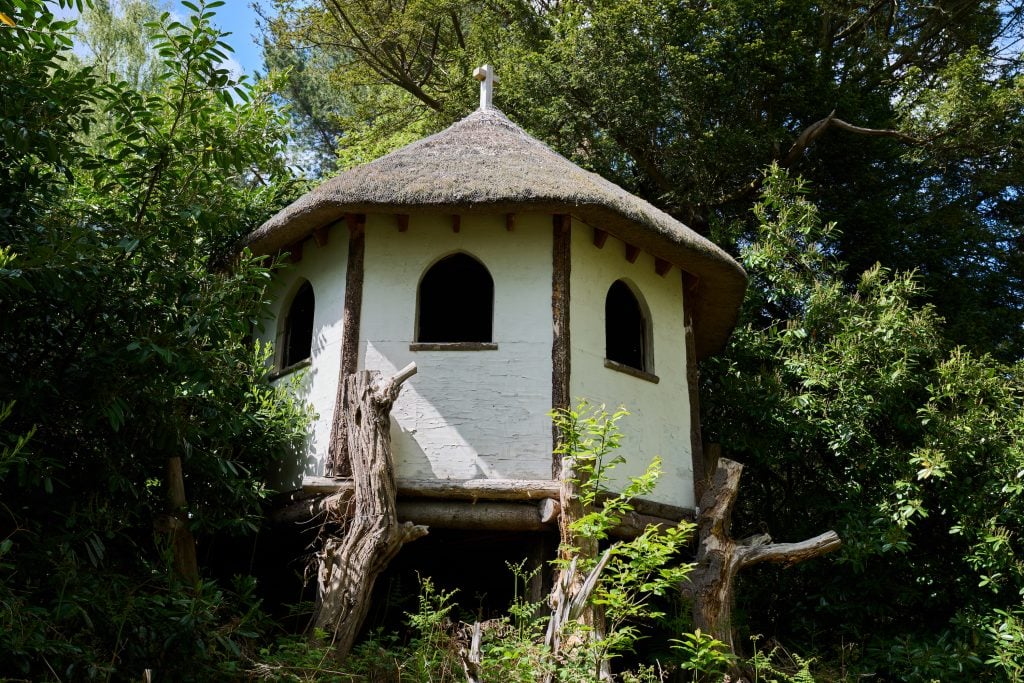
The hermitage, a rustic cottage at Painshill Park, an 18th-century landscape garden in Cobham, Surrey. Photo by John Walton/PA Images via Getty Images.
The growing fascination with a bucolic and contemplative way of life led to an 18th-century fashion for hermitages. These were faux-rustic cottages that became a popular feature in noble and aristocratic estates. By my count, there appears to have been over 250 hermitages across Europe and the British Isles at the trend’s peak. The British connoisseur Horace Walpole compared these structures to “tableaux vivants vaguely suggestive of Saints John or Jerome in the Desert,” underscoring the mainstreaming of their once-sacred roots.
Stylistically, hermitages combined a contemporary fascination with the natural origins of architecture along with a love of artistic depictions of hermits living in tree trunks and grottos. For instance, the hermitage at Painshill in the southwest of London is supported by tree trunks and topped with a thatched roof. Some were populated with sculptures or stuffed mannequins. The owners of others, including Painshill, employed people to play ancient hermits in exchange for lodging and a salary.
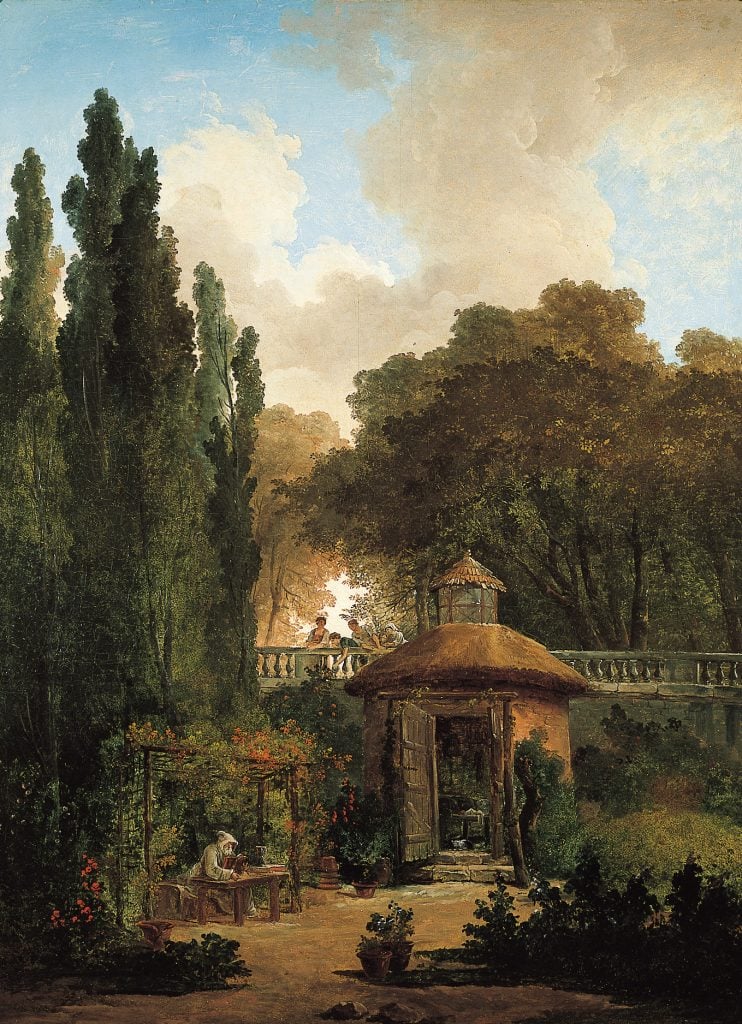
Hubert Robert, A Hermit in a Garden, about 1790. Oil on canvas. Collection of Speed Art Museum, Louisville, Kentucky. Given in memory of their mother, Mrs. John Vance Collis, by Mrs. Condict Moore, Mrs. William W. Hancock Jr., and Mrs. Joe M. Rodes. Restored by income from the Marguerite Montgomery Baquie Memorial Trust, 1995.
“A Hermit in a Garden” by the 18th-century French painter Hubert Robert alludes to this custom of ornamental living. The art historian Joseph Baillio has linked this painting to a garden Robert designed for the Princesse de Monaco in the Northern French site of Betz. A man named Alexis Herbin was hired to play the role of hermit and live on the grounds.
Contemporaries recount that Herbin the hermit was to “dress in a sackcloth and clean his hut… grow vegetables beside his hut, keep pigeons, and collect firewood. Most importantly he was to show curious visitors the chapel and his little garden and politely ensure that no one disturbed anything.” In return, he is said to have received as much firewood as he required, several packages of candles, and 100 livres per year, equal to about a third of the annual wage of an unskilled laborer.
Hermits and hermitages lost their spiritual symbolism over time, becoming another token of upper-class excess. As landscaping fashions changed, hermitages and their living hermits became obsolete—only for the concept to be resuscitated in a diminutive, collectible format in the next century.
Mainstream Contemporary Kitsch

Garden gnomes stand at the Zwergstatt in Gräfenroda. Photo by Michael Reichel/picture alliance via Getty Images.
According to Campbell, garden gnomes are “the afterlife of the hermit,” occupying the historical, mythological, spiritual, and cultural void left behind by their ornamental forebears. Gnomes in their contemporary, impish form originated in 19th-century Germany. Although the town of Gräfenroda in Thuringia was once home to numerous gnome factories, only one, owned by Philip Griebel, survives to this day. Adapted from the practice of placing wood or porcelain figurines in gardens to promote abundance, these playful figures continued the long tradition of watching over green spaces, only now with a new sense of irreverence.
At the same time, the mass production of garden gnomes made them into one of many cultural symbols of kitsch. Inevitably, artists began to view them as outdated tokens of suburban domesticity to react against. Notably, Paul McCarthy launched a provocative revisionist take on the value of garden gnomes. In 2014, the LA-based artist installed a chocolate factory in the Paris Mint to produce chocolate versions of his “trees”, some with gnomes holding the lewd saplings.
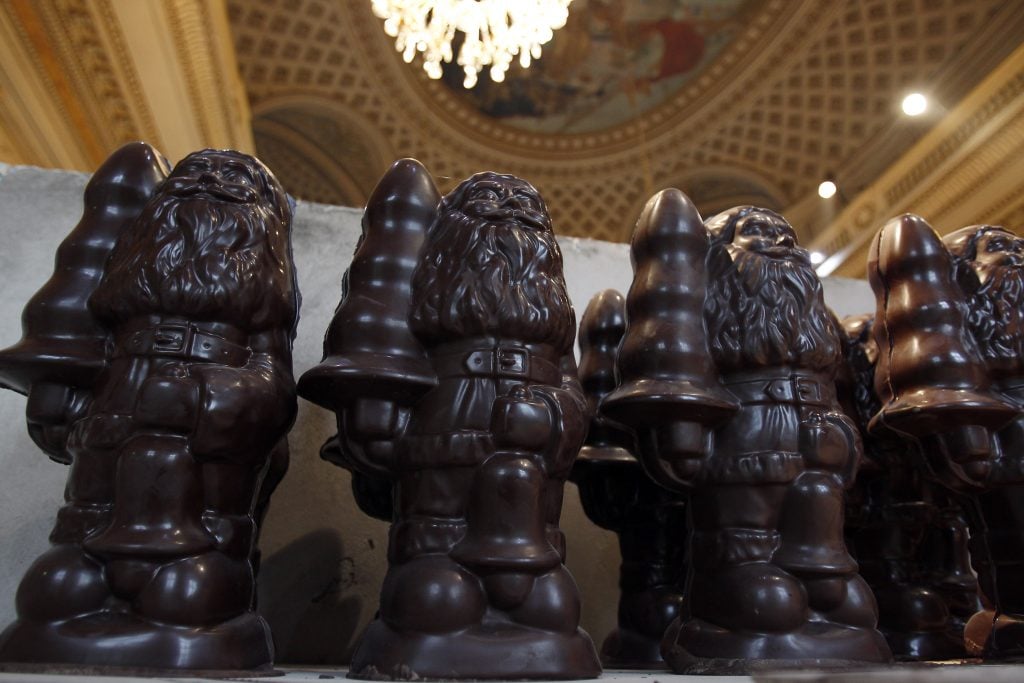
Figurines made of chocolate are displayed by Controversial US artist, Paul McCarthy during his ‘Chocolate Factory’ exhibition at the Monnaie de Paris on October 24, 2014, in Paris, France. Photo by Chesnot/Getty Images.
McCarthy’s piece can be seen as an homage to Dieter Roth’s work with chocolate in the late 1960s, including his submerging of a garden gnome into a block of confectionary to comment on how seemingly mundane objects, from candies to gnomes, can become symbols of national identity.
Artists have continued to take inspiration from these small decorative figurines in the decades since. For instance, Elliott Arkin’s series A Peaceable Kingdom (2012) imagines artists such as Pablo Picasso and Georgia O’Keeffe as garden gnomes, reducing august artistic icons to small-scale kitsch figurines.
Elsewhere, Thomas Schütte’s Gartenzwerge (2017), translates icons of mass production—including the garden gnome—into sleek Murano glass models, showing how a sculpture’s method of production can alter the public’s perception of its value. This perennial appeal of garden gnomes as a meta-commentary on contemporary consumerism is ultimately indebted to their historical origins, as they transformed from symbols of ancient spirituality to emblems of excesses.





